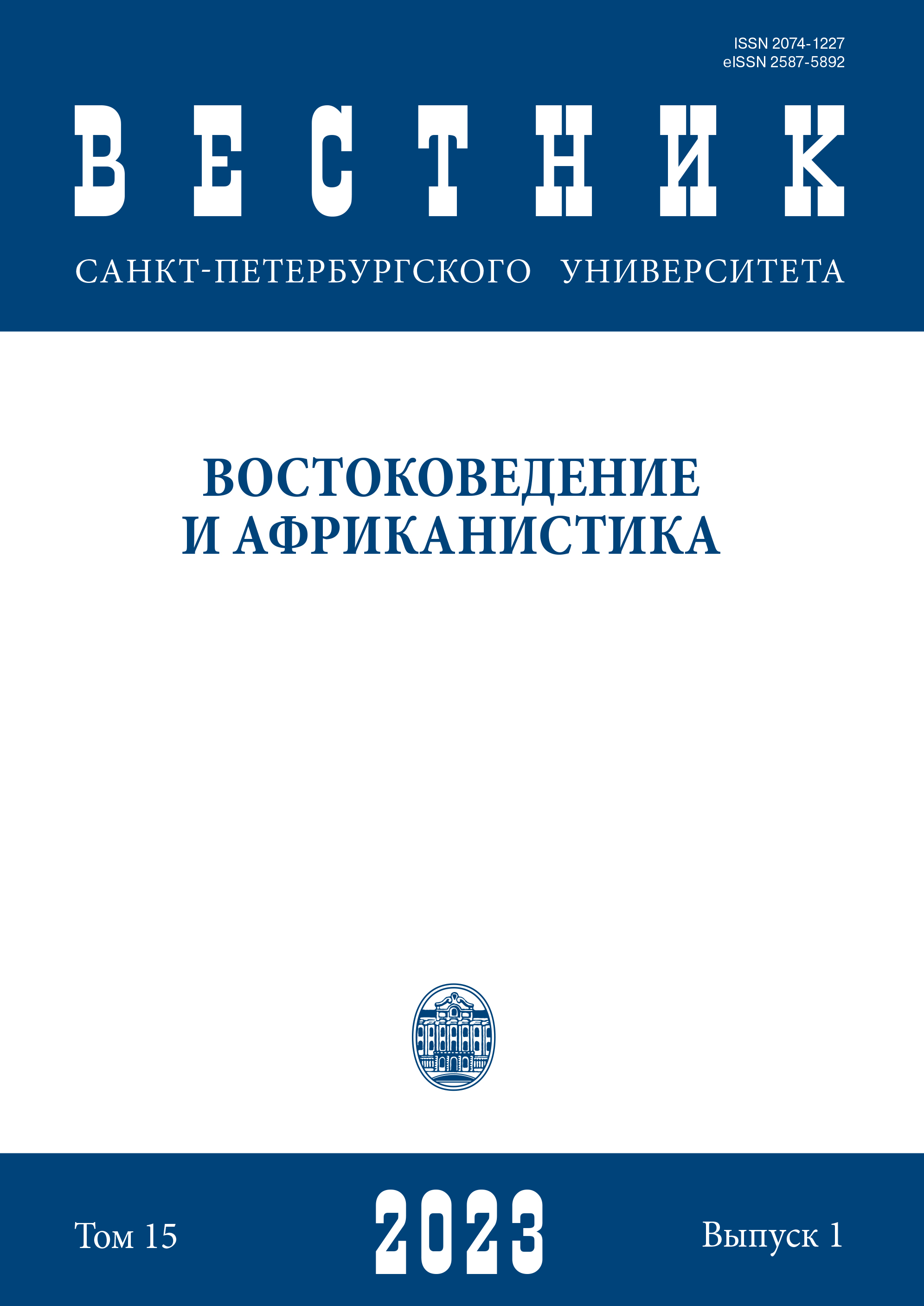Persian and Russian Names of Textiles Imported to Russia from Iran in the First Half of the 17th Century, as Listed in the Inventories of Goods and Diplomatic Gifts
DOI:
https://doi.org/10.21638/spbu13.2023.102Abstract
The question of the origin and ways of borrowing into the Russian language of the names of oriental fabrics, which were imported in large quantities into Russia in the 17th century, has been attracting attention of scholars for a long time, but synchronous bilingual Persian Russian sources were hardly involved in the study of this issue. The article examines a number of such sources stored in the Russian State Archive of Ancient Acts: these are lists of goods and gifts brought from Safavid Iran by trade and diplomatic representatives of Shah Safi I (1629–1642), accompanied by a Russian translation and stored in f. 77 “Relations between Russia and Persia”. The study of these materials makes it possible to determine the range of fabrics imported on behalf of the Shah, to clarify the meaning and scope of use of a number of Russian and Persian terms, as well as the time of penetration of some borrowed Iranisms into the Russian language. The terms borrowed from Persian and other foreign languages were previously correlated by researchers with specific samples of textiles stored in museum collections. Thanks to this, having established synchronous lexical correspondences, it is possible to more accurately determine what kind of fabrics with what technological features were designated by Persian terms, the definitions of which in the explanatory dictionaries of the Persian language are often contradictory.
Keywords:
Russian language, Persian language, historical lexicology, etymology, language contacts, names of fabrics, archival sources
Downloads
References
Downloads
Published
How to Cite
Issue
Section
License
Articles of "Vestnik of Saint Petersburg University. Asian and African Studies" are open access distributed under the terms of the License Agreement with Saint Petersburg State University, which permits to the authors unrestricted distribution and self-archiving free of charge.





